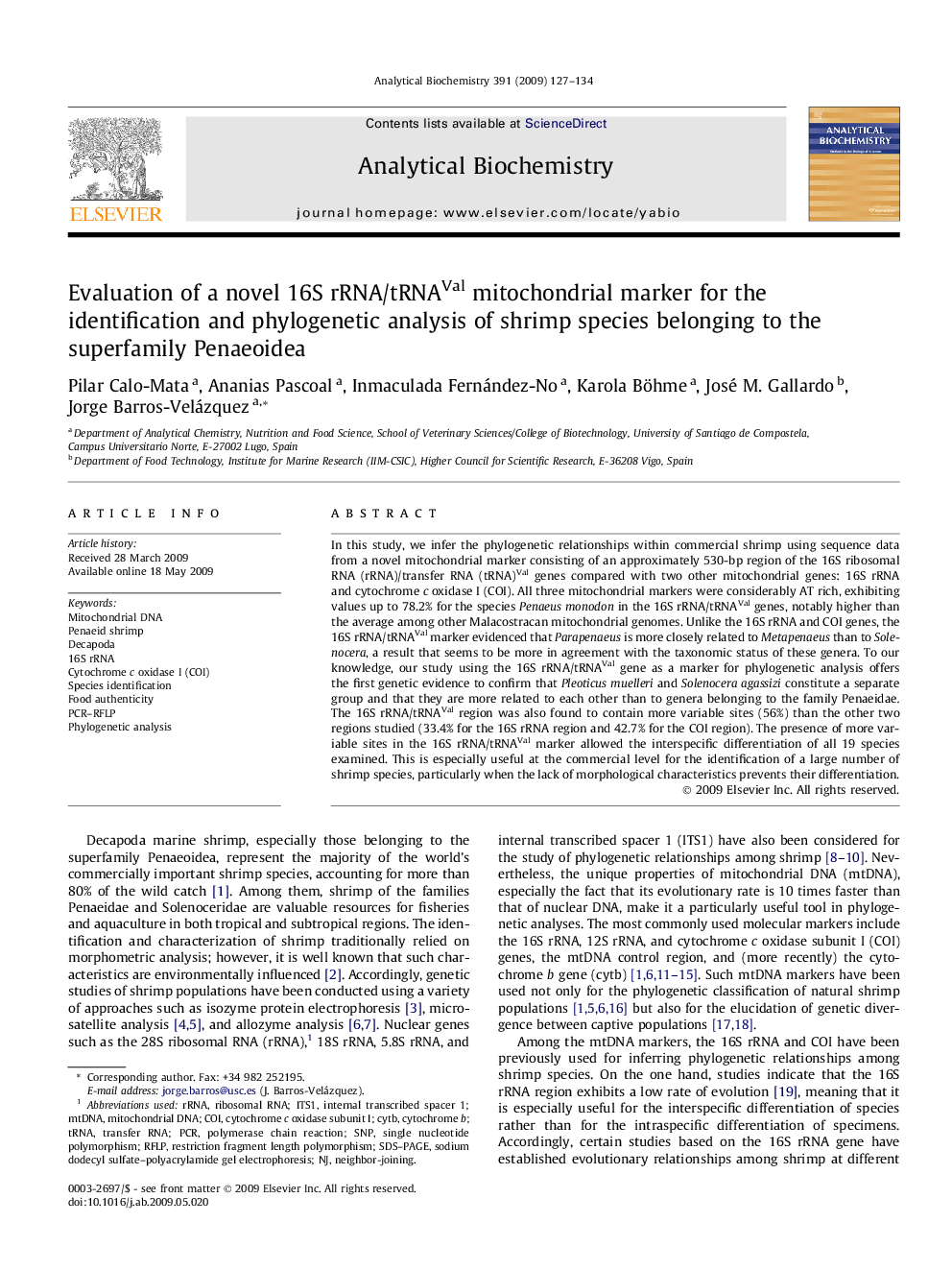| Article ID | Journal | Published Year | Pages | File Type |
|---|---|---|---|---|
| 1175187 | Analytical Biochemistry | 2009 | 8 Pages |
In this study, we infer the phylogenetic relationships within commercial shrimp using sequence data from a novel mitochondrial marker consisting of an approximately 530-bp region of the 16S ribosomal RNA (rRNA)/transfer RNA (tRNA)Val genes compared with two other mitochondrial genes: 16S rRNA and cytochrome c oxidase I (COI). All three mitochondrial markers were considerably AT rich, exhibiting values up to 78.2% for the species Penaeus monodon in the 16S rRNA/tRNAVal genes, notably higher than the average among other Malacostracan mitochondrial genomes. Unlike the 16S rRNA and COI genes, the 16S rRNA/tRNAVal marker evidenced that Parapenaeus is more closely related to Metapenaeus than to Solenocera, a result that seems to be more in agreement with the taxonomic status of these genera. To our knowledge, our study using the 16S rRNA/tRNAVal gene as a marker for phylogenetic analysis offers the first genetic evidence to confirm that Pleoticus muelleri and Solenocera agassizi constitute a separate group and that they are more related to each other than to genera belonging to the family Penaeidae. The 16S rRNA/tRNAVal region was also found to contain more variable sites (56%) than the other two regions studied (33.4% for the 16S rRNA region and 42.7% for the COI region). The presence of more variable sites in the 16S rRNA/tRNAVal marker allowed the interspecific differentiation of all 19 species examined. This is especially useful at the commercial level for the identification of a large number of shrimp species, particularly when the lack of morphological characteristics prevents their differentiation.
